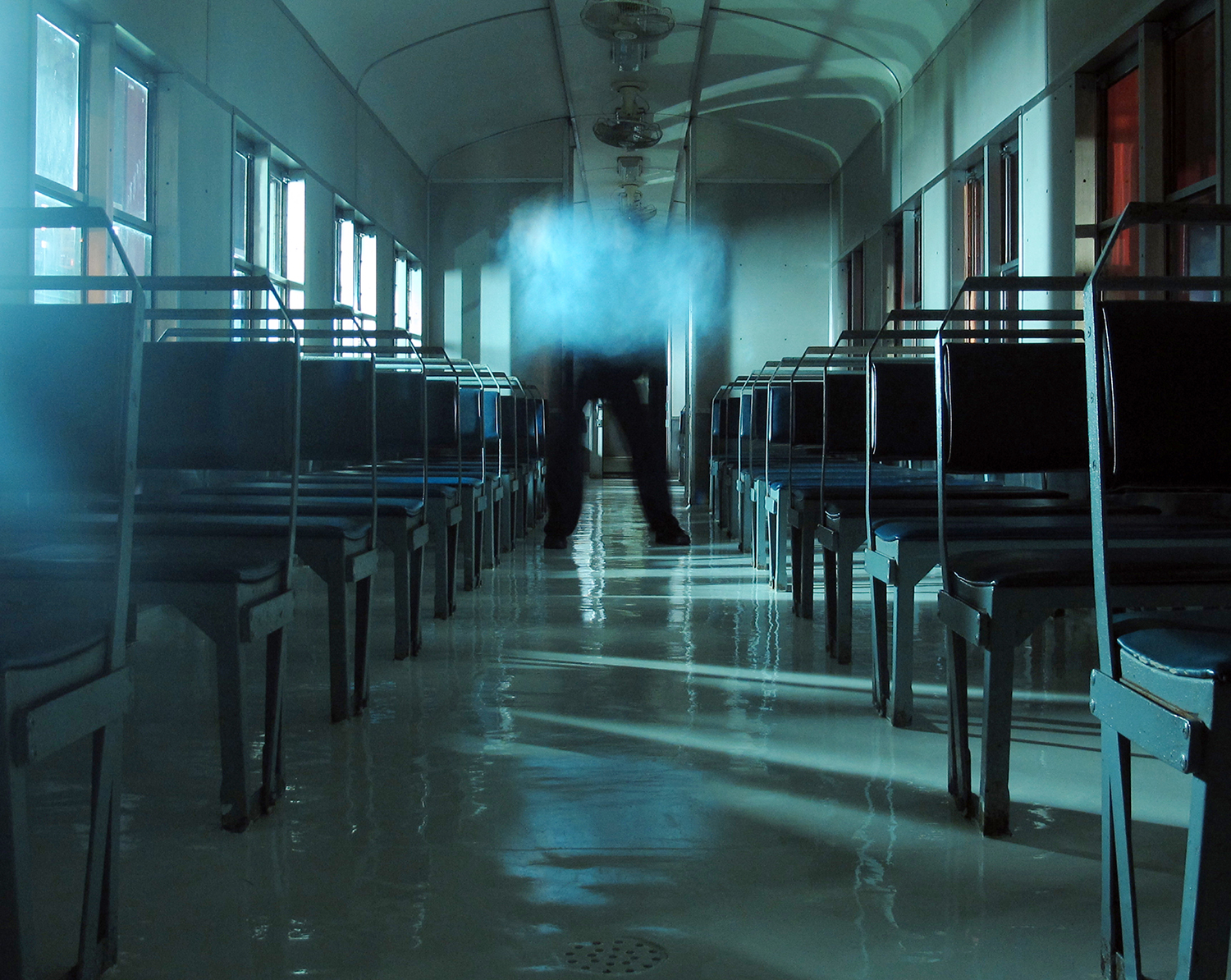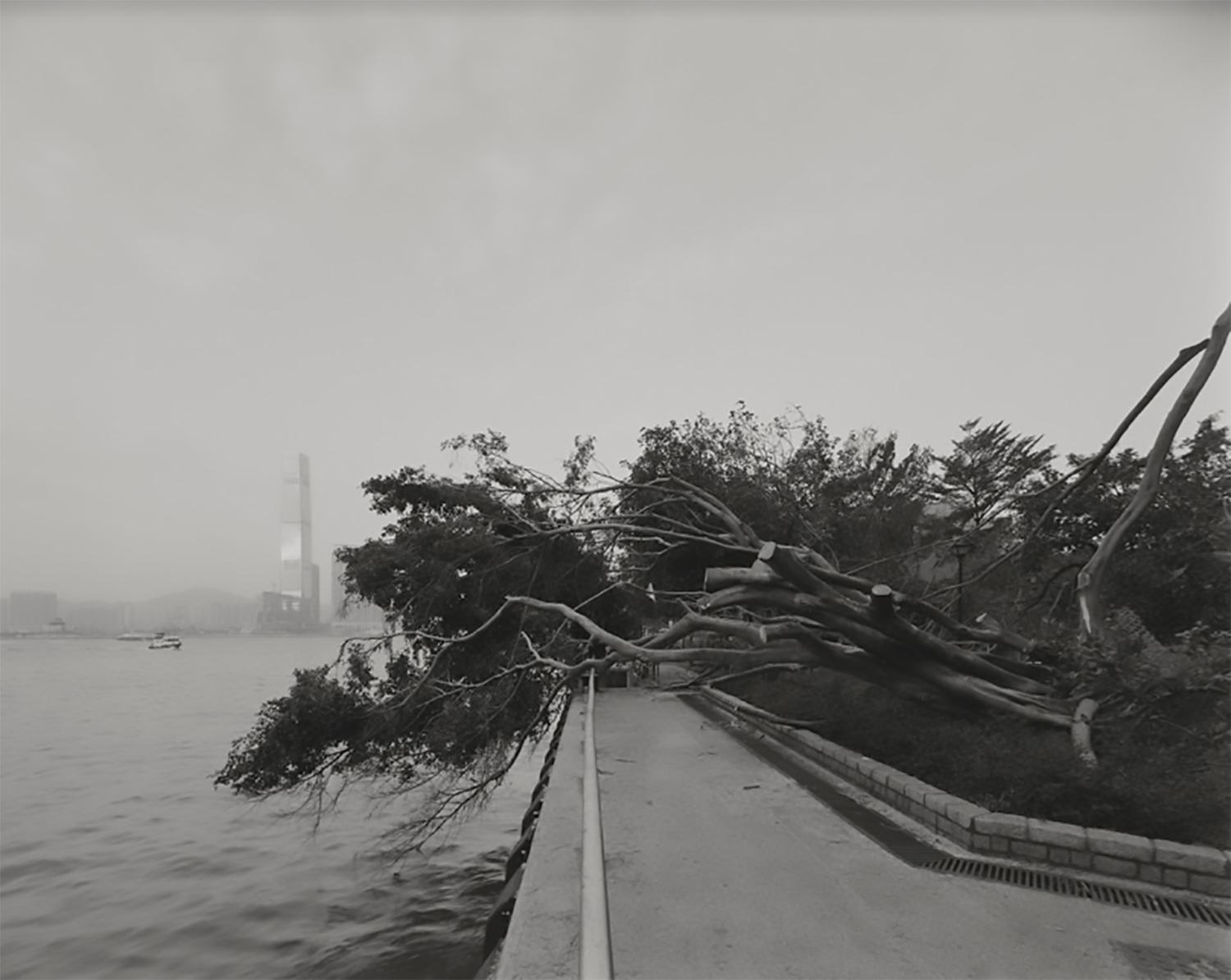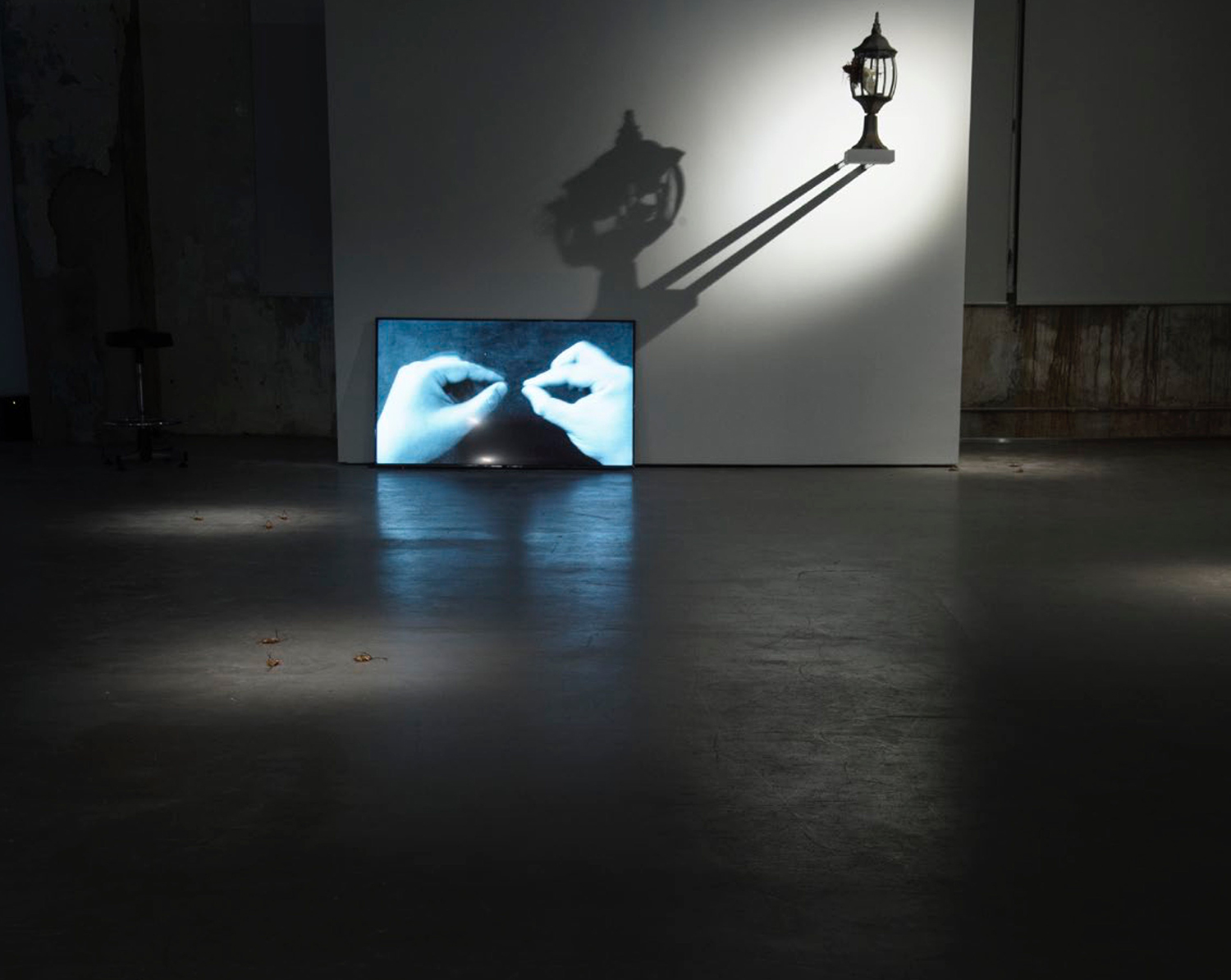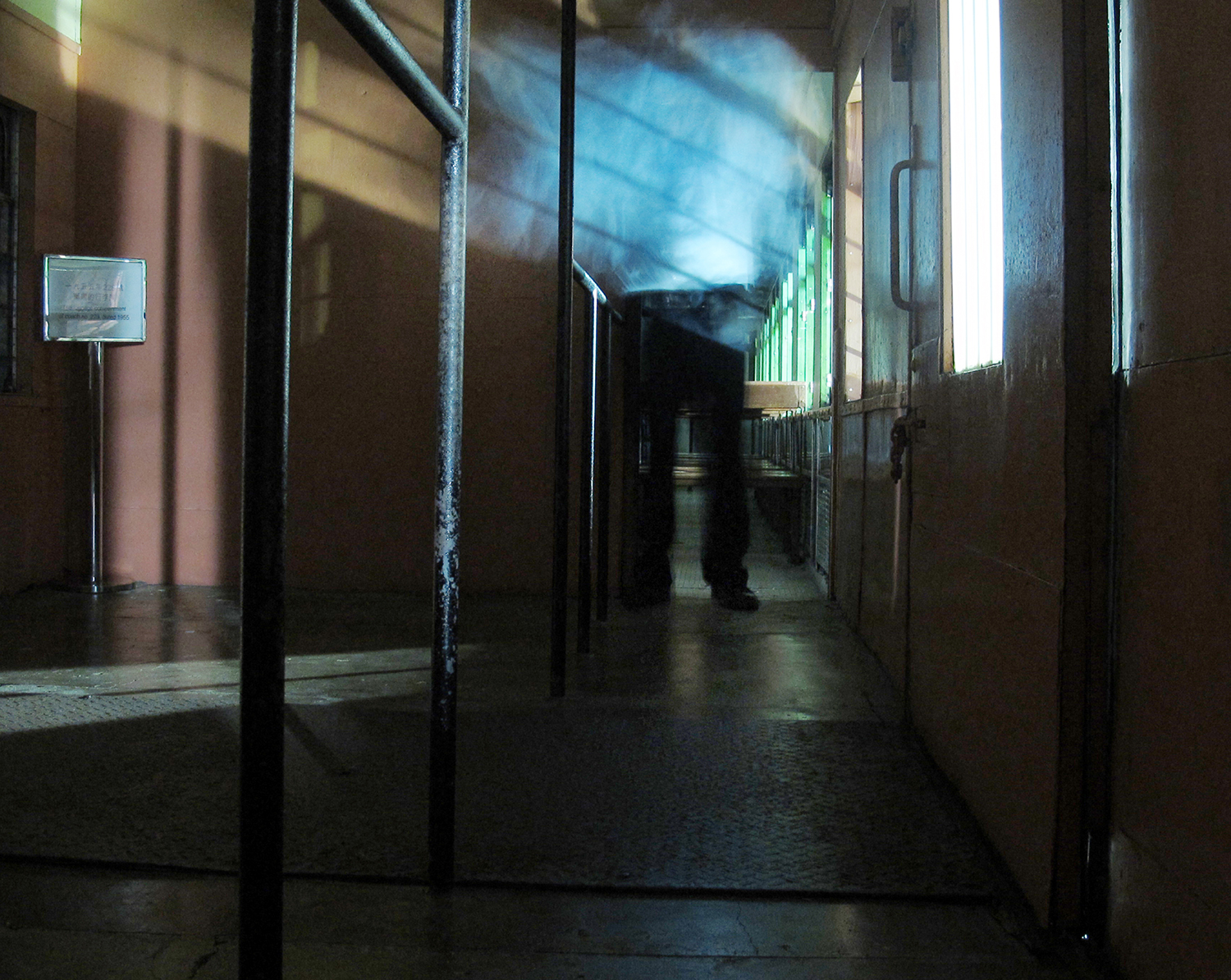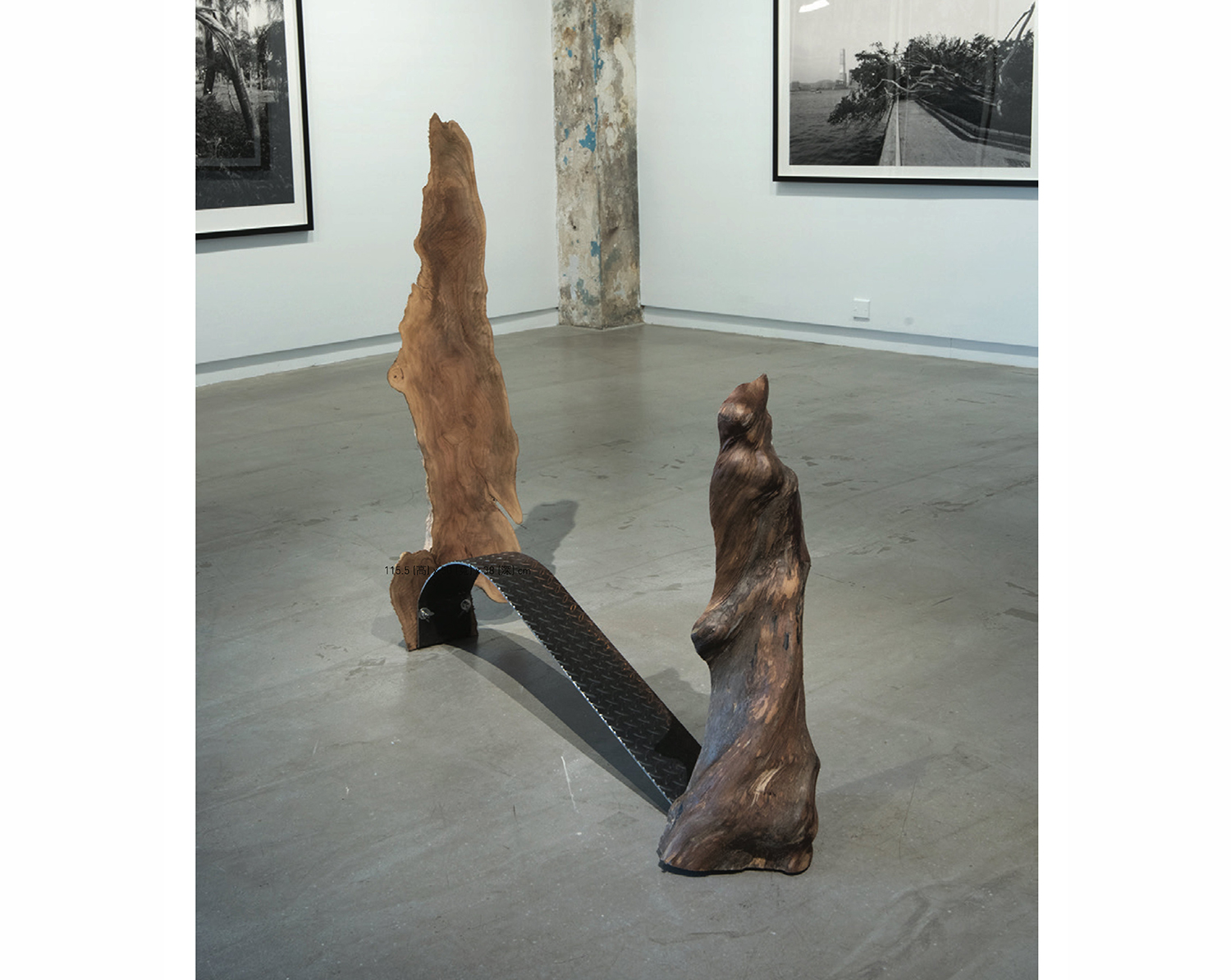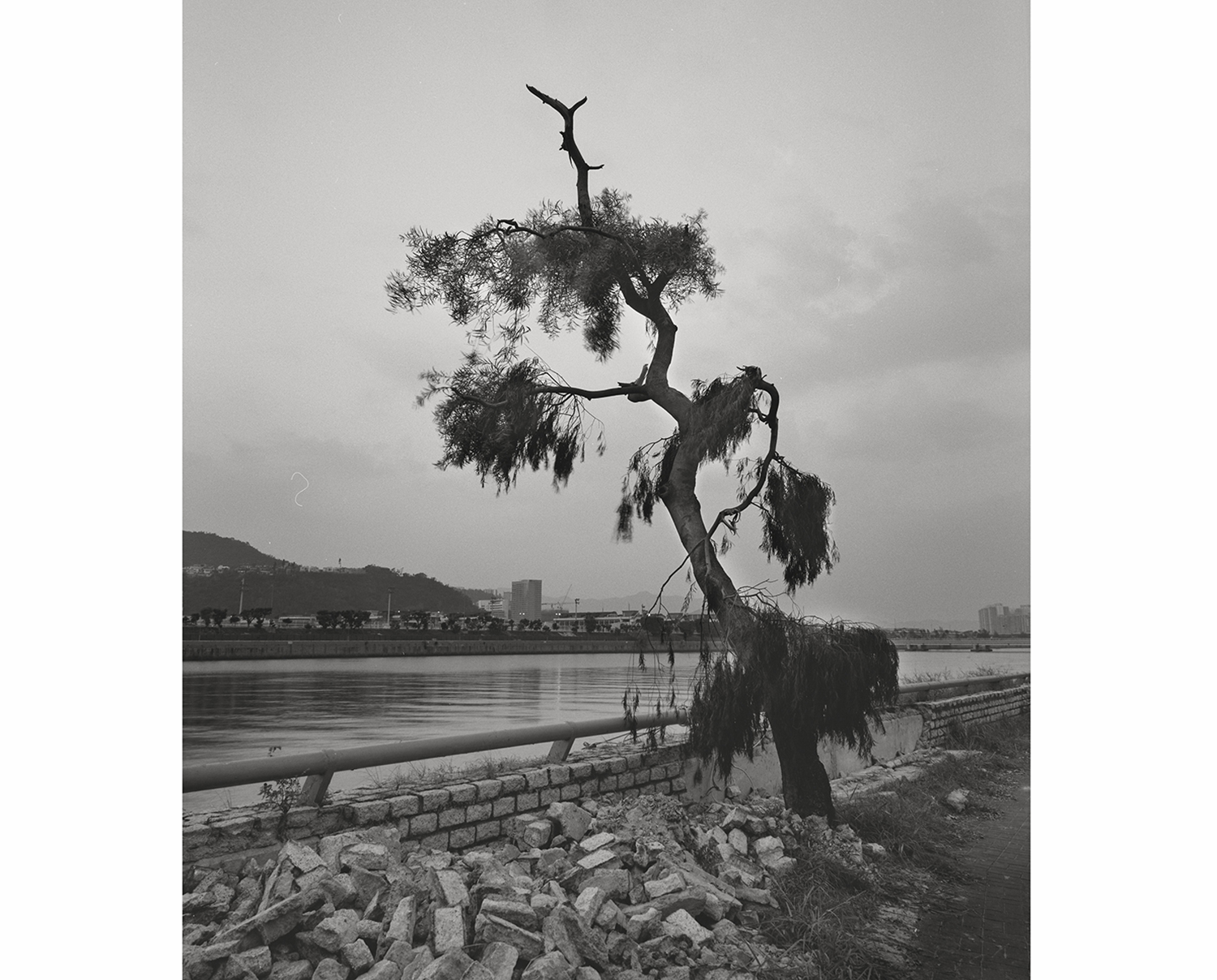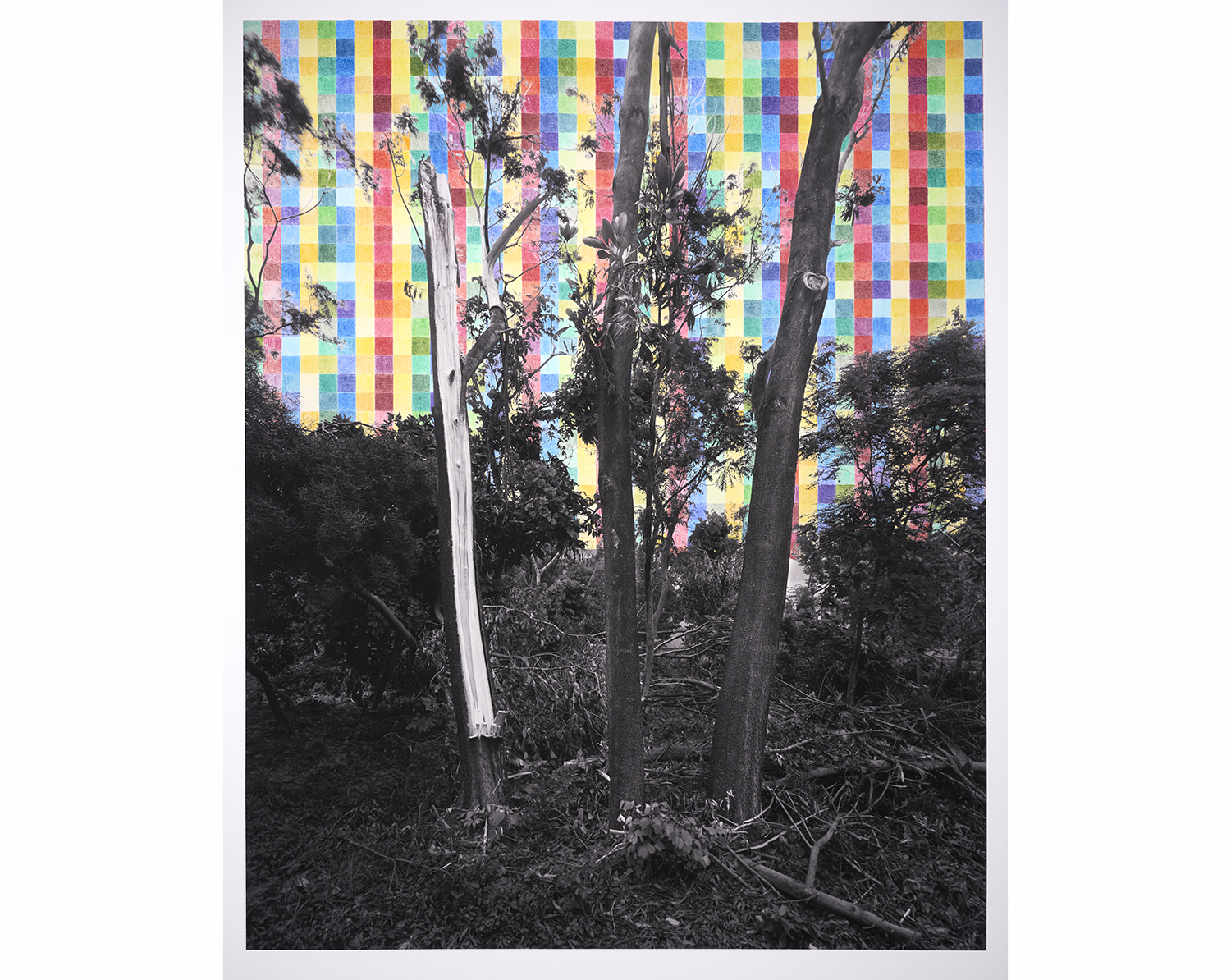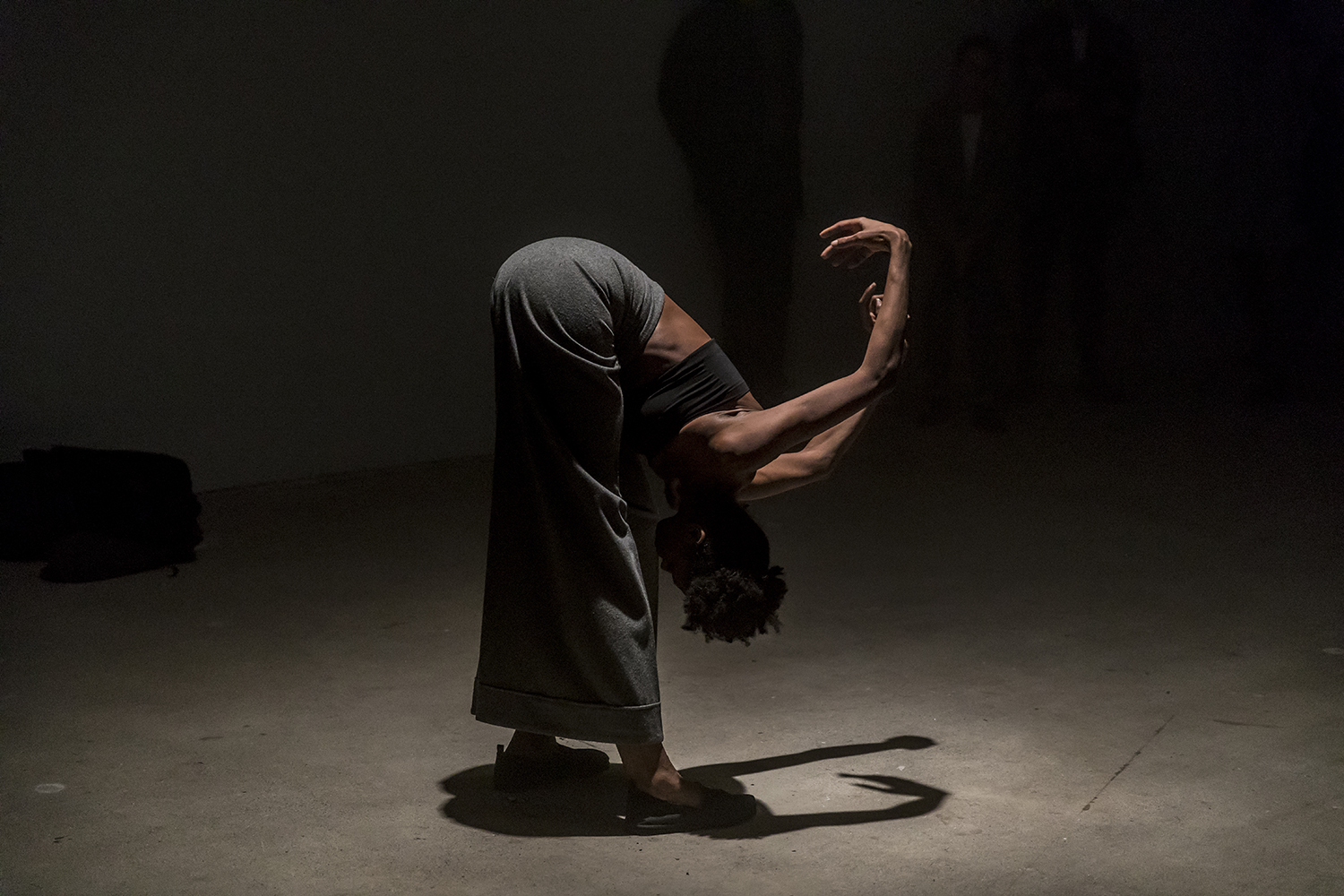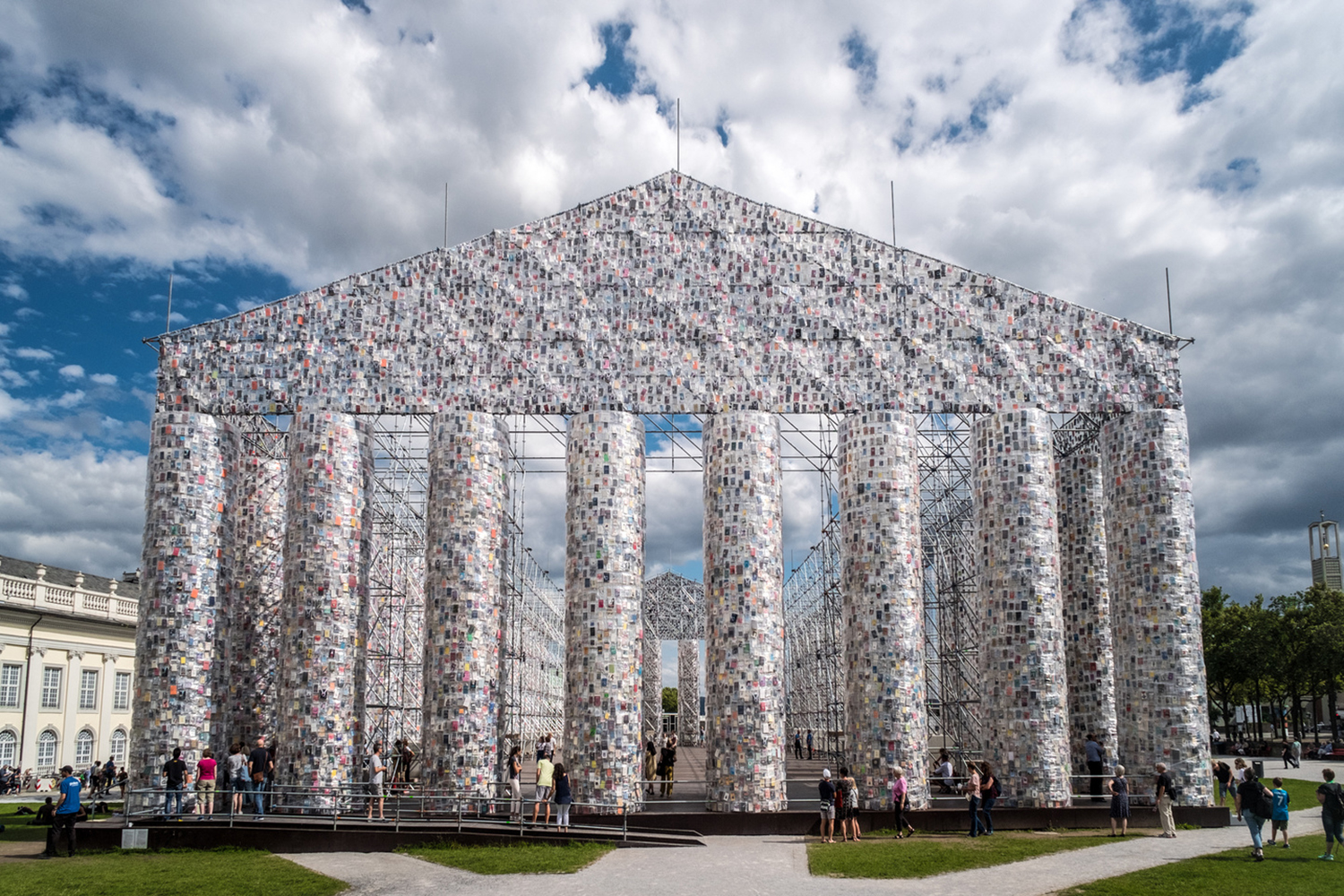The past eight months of political protest have left the administration of Hong Kong speechless. In failing to acknowledge its own deepening social and democratic crisis, the city government has instead embarked on a weird game of publicity erasure (i.e. soft censorship) so as to outwardly save face to the international community. Nothing has disturbed the smooth running and polished image of Asia’s central financial hub with such force in decades, perhaps except for its seasonal mega-typhoons. In a new dual solo presentation at Blindspot Gallery, artists Luke Ching Chin Wai and South Ho Siu Nam present the weather as a metaphor for the civic turmoil that currently obstructs the otherwise polished cityscape — offering a critique of how to deal (or not to deal) with urban crisis.
Ching’s video series “Weather Report: Liquefied Sunshine” (2014–15) depicts the artist’s production of artificial rainfall outside public art institutions using water trucks in both Taipei and Hong Kong, two contested cities in the periphery of what is known as Greater China. Prompting temporary chaos in the immediate urban vicinity (running passersby, frantic umbrella use), these “staged typhoons” reveal the theatrical effects of weather in metropolises where public safety and accessibility are used to enforce order and control. Bad weather, much like protests, obstructs the city’s branded image: Ching explores this in a wall-based collage of postcards (Liquefied Sunshine, 2014–15) in which pristine, sun-lit motifs of Hong Kong are totally crossed out by white marker, an incision that reads as both melancholic and full of resentment.
By contrast, the photographic work of Ho seems more serene on the surface: large-scale black-and-white inkjet prints of trees broken after the city’s most recent superstorm, Typhoon Mangkhut in 2018 (Whiteness of Trees, 2018). Isolated in the concrete cityscape, they appear as both violated bodies and as bodies violating urban space, either breaking or being broken by fences, walls, and lampposts. There’s beauty and metaphorical depth in these quiet images, which makes the appearance of actual protest images toward the end of the exhibition feel almost redundant: two video works (Can you hear the people say? 2019) show the recent stream of civic bodies flowing through the city streets, forming an entity as powerful and destructive as that of any hurricane.

